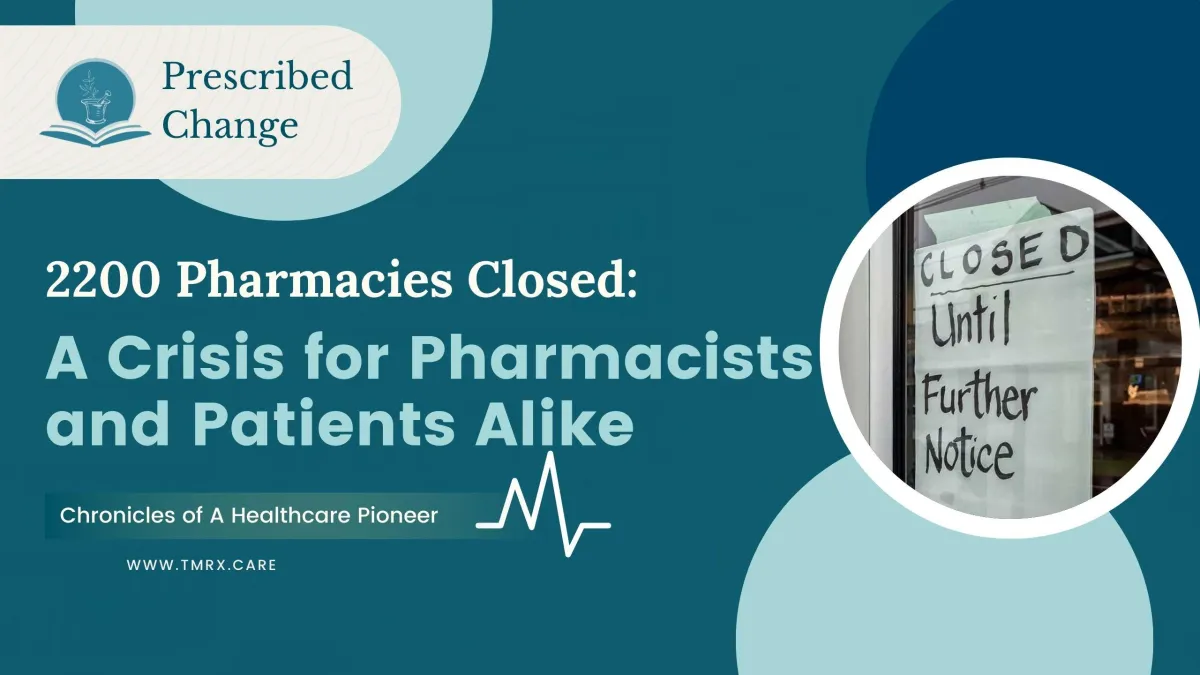
2200 Pharmacies Closed: A Crisis for Pharmacists and Patients Alike
The pharmacy landscape in the United States is undergoing a dramatic shift. A staggering 2200 pharmacies closed their doors in 2024, leaving thousands of pharmacists facing uncertainty and communities grappling with diminished access to essential healthcare services. This alarming trend has significant implications for both the profession and public health.
The Causes of This Crisis
Several factors are contributing to this wave of closures.
Profit Margins Shrinking: Reimbursement rates for medications continue to decline, squeezing profit margins for pharmacies.
Rising Operational Costs: Increased labor costs, rising rent, and the burden of complying with ever-changing regulations are putting a strain on pharmacies' bottom lines.
Competition from Big Box Stores: Large retailers like Walmart and Amazon are expanding their pharmacy services, further intensifying competition.
The Impact of PBMs (Pharmacy Benefit Managers): PBMs, powerful middlemen in the prescription drug supply chain, negotiate drug prices with manufacturers and dictate reimbursement rates to pharmacies. Their aggressive tactics have significantly eroded pharmacy profits.

The Impact on Pharmacists
For pharmacists, these closures translate into job losses, reduced career opportunities, and increased stress. Many are facing lay-offs, forced to relocate, or even considering leaving the profession altogether. This talent drain threatens to exacerbate existing healthcare shortages and undermine patient care.
The Impact on Patients
Community members, particularly those in underserved areas, are bearing the brunt of these closures. Reduced access to pharmacies can lead to:
Medication Access Challenges: Patients may face difficulties in obtaining their prescriptions, leading to medication interruptions and potential health complications.
Increased Travel Distances: Patients may need to travel further to access essential medications, creating logistical challenges and potentially delaying critical treatments.
Limited Healthcare Options: Pharmacy closures can also limit access to other essential services, such as vaccinations, immunizations, and medication therapy management.

What Can Be Done?
This crisis demands urgent action.
Policy Reforms: Policymakers must address the imbalance of power between pharmacies and PBMs. This could include measures such as increased transparency in PBM pricing and improved reimbursement rates for pharmacies.
Support for Independent Pharmacies: Government programs and initiatives should support independent pharmacies in navigating these challenges. This could include providing financial assistance, offering technical support, and fostering collaboration among independent pharmacies.
Exploring New Models of Care: Pharmacists must adapt and explore new roles and service offerings, including remote pharmacy, medication therapy management, chronic disease management, and patient care coordination.
A Call to Action
This is a critical moment for the pharmacy profession. Pharmacists must advocate for their profession, engage with policymakers, and explore innovative solutions to ensure the long-term viability of community pharmacies.
In Conclusion
The closure of 2300 pharmacies in 2024 is a wake-up call. It underscores the urgent need for systemic changes to ensure the sustainability of community pharmacies and the continued delivery of quality patient care. By embracing new models of care, such as remote pharmacy, pharmacists can adapt to this changing landscape and build fulfilling and rewarding careers.
P.S. If you're a pharmacist feeling overwhelmed by these changes, I encourage you to explore the Pivot Program: a program that guides pharmacists to explore opportunities beyond traditional pharmacy, such as remote patient care, consulting, and entrepreneurship. Visit The Pivot Program to learn more.
